Publications
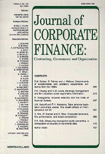 The Value of Corporate Voting Rights Embedded in Option Prices?
The Value of Corporate Voting Rights Embedded in Option Prices?
Journal of Corporate Finance 22, 16-34, 2013 [with Marco Poltera]
Abstract: This paper proposes and tests a new method to extract the value of corporate voting rights from market prices of American-style single-stock options. The method models voting-right values as non-cash dividends and backs them out via numerical optimization from prices of equity options. Simulation experiments show that the method is accurate and outperforms existing option-based approaches by reducing their measurement error from 17.2% to 1.57% in terms of root mean squared errors and almost eliminates their bias. The paper also contributes an empirical analysis of corporate voting-right values in European companies in the time period between 2003 and 2010. Voting rights have an annualized average value of 0.37% of the share price and are significantly worth more in months in which either ordinary or extraordinary general meetings take place but no single shareholder holds a majority stake in the company. Finally, voting values are higher in companies incorporated in French-civil-law countries (France and the Netherlands) than in German-civil-law countries (Germany and Switzerland).
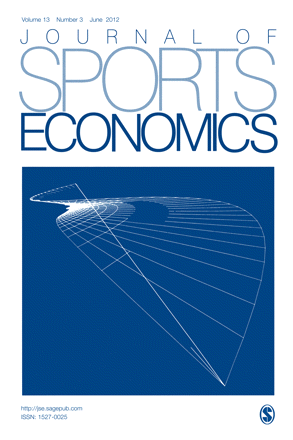 Forced Manager Turnovers in English Soccer Leagues: A Long-Term Perspective
Forced Manager Turnovers in English Soccer Leagues: A Long-Term Perspective
Journal of Sports Economics, forthcoming [with Stefano d'Addona]
Abstract: The authors conduct an empirical analysis of a hand-collected sample of 2,376 turnovers of soccer managers in the four major English leagues in the seasons from 1949-1950 to 2007-2008. While the relation between the probability of a manager being fired and long-term performance remained remarkably stable, both the absolute frequency and the sensitivity of firing decisions on the outcome of recent matches steadily and significantly increased during the six decades covered by the sample. This is likely to reflect the increased level of competition in and economic importance of the English soccer leagues.
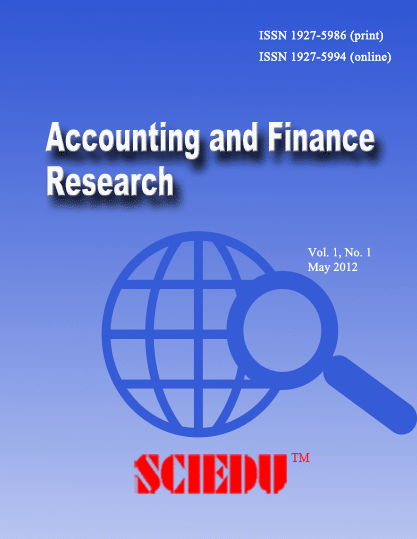 WACC Calculations in Practice: Incorrect Results due to Inconsistent
Assumptions - Status Quo and Improvements
WACC Calculations in Practice: Incorrect Results due to Inconsistent
Assumptions - Status Quo and Improvements
Accounting and Finance Research 2(2), 2013 [with Matthias Grüninger]
Abstract: This paper argues that in practical applications the weighted average cost of capital (WACC) is often incorrectly estimated due to the simultaneous use of two inconsistent input parameters: (i) a beta of debt equal to zero when transforming asset betas into equity betas (beta levering) and (ii) a cost of debt above the risk-free interest rate when calculating the WACC. The paper discusses and quantifies the consequences of this inconsistency and offers viable solutions. By replacing the cost of debt with the risk-free rate, a more accurate WACC is calculated and the estimation of the cost of debt becomes obsolete. Furthermore, the paper presents a solution to obtain the correct WACC without increasing the calculation’s complexity.
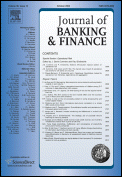 What Drives the Performance of Convertible Bond Funds?
What Drives the Performance of Convertible Bond Funds?
Journal of Banking and Finance, 34 (11), 2600-2613, 2010 [with Manuel Ammann and Ralf Seiz]
Abstract: This paper examines the performance of US mutual funds that invest primarily in convertible bonds. Multivariate cross-sectional analyses show a significant relation between a fund’s performance and its asset composition: the higher the difference in the percentage of assets invested in convertible bonds compared to the percentage invested in stocks, the higher the performance, on average. We show that this result can be explained by factors associated with investment opportunities in the convertible-bond market and trading strategies related to convertible arbitrage, as typically performed by hedge funds. Overall, convertible-bond fund performance measured by alpha is comparable to a passive investment in stocks, bonds, and convertible bonds. This performance is the result of weak selection skills and successful timing strategies related to convertible arbitrage.
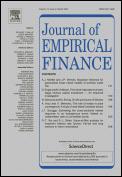 Simulation-Based Pricing of Convertible Bonds
Simulation-Based Pricing of Convertible Bonds Journal of Empirical Finance, 15, 310-331, 2008 [with Manuel Ammann and Christian Wilde]
Abstract: We propose and empirically investigate a pricing model for convertible bonds based on Monte Carlo simulation. The method uses parametric representations of the early exercise decisions and consists of two stages. Pricing convertible bonds with the proposed Monte Carlo approach allows us to better capture both the dynamics of the underlying state variables and the rich set of real-world convertible bond specifications. Furthermore, using the simulation model proposed, we present an empirical pricing study of the US market, using 32 convertible bonds and 69 months of daily market prices. Our results do not confirm the evidence of previous studies that market prices of convertible bonds are on average lower than prices generated by a theoretical model. Similarly, our study is not supportive of a strong positive relationship between moneyness and mean pricing error, as argued in the literature.
 International Stock-Bond Correlations in a Simple Affine Asset
Pricing Model
International Stock-Bond Correlations in a Simple Affine Asset
Pricing Model Journal of Banking and Finance, 30 (10), 2747-2765, 2006 [with Stefano d'Addona]
Abstract: We use an affine asset pricing model to jointly value stocks and bonds. This enables us to derive endogenous correlations and to explain how economic fundamentals influence the correlation between stock and bond returns. The presented model is implemented for G7 post-war economies and its in-sample and out-of-sample performance is assessed by comparing the correlations generated by the model with conventional statistical measures. The affine framework developed in this paper is found to generate stock–bond correlations that are in line with empirically observed figures.
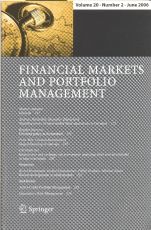 Pricing American-Style Options by Simulation
Pricing American-Style Options by Simulation
Financial Markets and Portfolio Management, 19 (1), 109-116, 2005